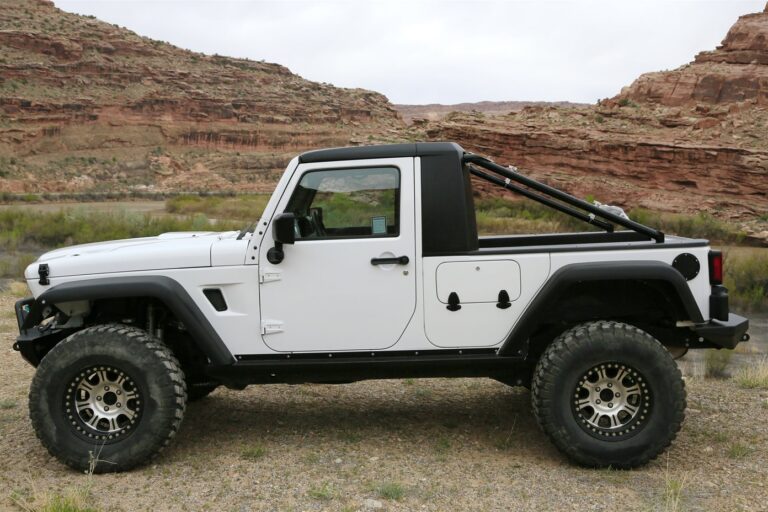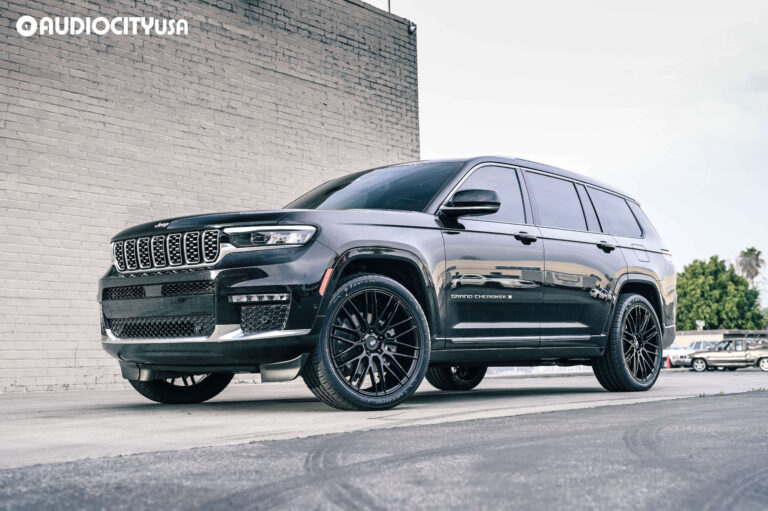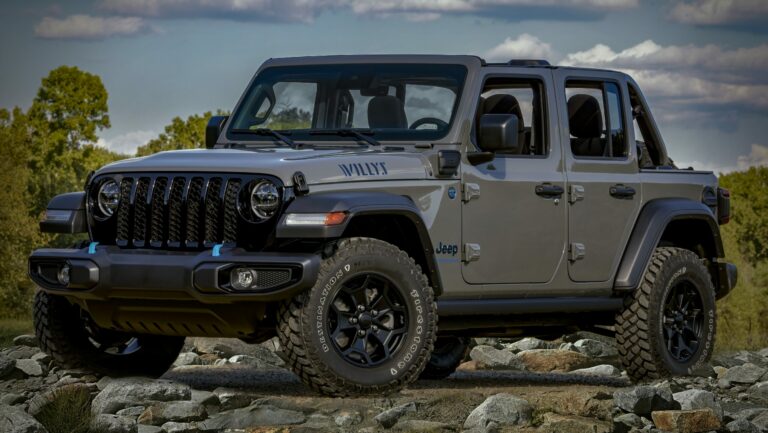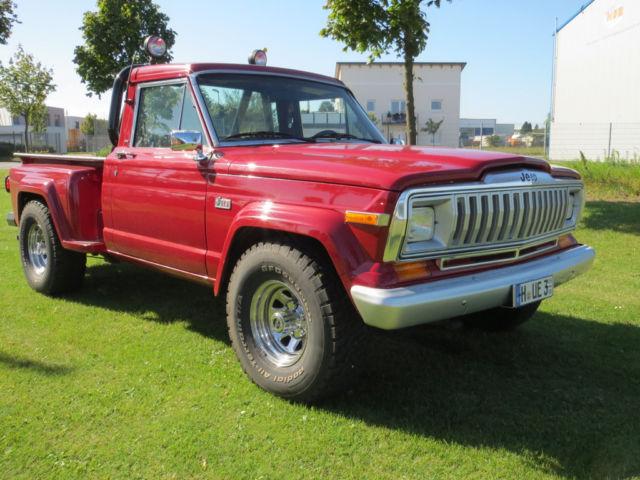70 Jeep Wagoneer For Sale: A Comprehensive Guide to Owning an American Icon
70 Jeep Wagoneer For Sale: A Comprehensive Guide to Owning an American Icon jeeps.truckstrend.com
The Enduring Allure of the 1970 Jeep Wagoneer
In the annals of automotive history, few vehicles possess the timeless appeal and foundational significance of the Jeep Wagoneer. While modern SUVs dominate today’s roads, the 1970 Jeep Wagoneer stands as a proud ancestor, a vehicle that pioneered the concept of the luxury SUV long before the term was even coined. Blending robust off-road capability with a surprising degree of comfort and style, the Wagoneer, particularly the 1970 model, represents a pivotal moment in American automotive design.
70 Jeep Wagoneer For Sale: A Comprehensive Guide to Owning an American Icon
For enthusiasts and collectors, finding a "70 Jeep Wagoneer for sale" isn’t just about acquiring a classic vehicle; it’s about owning a piece of Americana, a rugged yet refined workhorse that effortlessly bridges the gap between utility and family transport. Its distinctive lines, chrome accents, and spacious interior evoke an era of adventurous spirit and understated elegance. Whether you’re seeking a nostalgic project, a reliable weekend cruiser, or a unique addition to your collection, understanding the nuances of buying a 1970 Wagoneer is crucial. This guide will provide a detailed roadmap for navigating the market, identifying key features, assessing condition, and ultimately, making an informed purchase of this beloved classic.
What to Look For: Key Features and Specifications of the 1970 Model
The 1970 Jeep Wagoneer was part of the original SJ series, which ran from 1963 to 1991. This particular model year offers a blend of classic design and the robust mechanicals that made the Wagoneer a legend. Understanding its specifications is vital for any prospective buyer.
Engine Options:
For 1970, the Wagoneer primarily offered two engine choices:
- AMC 232 cu in (3.8 L) Inline-Six: The standard engine, known for its reliability and durability, though not particularly powerful.
- Buick 350 cu in (5.7 L) "Dauntless" V8: An optional upgrade, this V8 provided significantly more power and torque, making it a more desirable choice for many buyers, especially those looking for better highway performance or towing capability.

Transmission & Drivetrain:
- Transmissions: Buyers could choose between a 3-speed manual transmission (T-15) or a highly regarded 3-speed automatic transmission (Turbo Hydramatic 400 – TH400), sourced from General Motors. The TH400 is generally preferred for its smooth operation and robustness.
- 4×4 System: The 1970 Wagoneer utilized a part-time four-wheel-drive system, typically with a Dana 20 transfer case. This system required manual engagement of the front hubs and the transfer case lever for 4WD operation, differing from the later full-time Quadra-Trac system introduced in 1973.

Body Style & Interior:
- Body: The 1970 Wagoneer was exclusively a four-door station wagon. Its boxy, utilitarian, yet stylish design is instantly recognizable.
- Interior: Known for its spaciousness, the interior offered comfortable seating for up to six passengers. While not as plush as later luxury SUVs, it featured durable materials, a simple dashboard layout, and often simulated woodgrain trim on the dash and door panels, adding a touch of sophistication.

Exterior Styling:
The 1970 model retains the iconic full-width grille with vertical bars and dual headlights, a design that would evolve but remain distinctly Wagoneer. Chrome bumpers, distinctive badging, and a relatively high ground clearance contributed to its commanding presence.
Navigating the Market: Where to Find a 1970 Jeep Wagoneer For Sale
Finding a 1970 Jeep Wagoneer can be an exciting hunt, but it requires knowing where to look. The market for classic vehicles is diverse, offering various avenues for potential buyers.
- Online Auction Sites: Platforms like Bring a Trailer and eBay Motors are excellent resources. Bring a Trailer, in particular, often features well-documented, higher-quality examples with extensive photo galleries and active comment sections. eBay offers a broader range, from projects to pristine vehicles.
- Specialized Classic Car Marketplaces: Websites such as Hemmings Motor News, ClassicCars.com, and AutoTrader Classics cater specifically to vintage vehicles. These sites often have advanced search filters, allowing you to narrow down by year, make, and model.
- Classic Car Dealers: Many dealerships specialize in vintage and collector vehicles. While prices might be higher, these dealers often offer inspected vehicles, potential warranties, and assistance with financing and shipping. Look for dealers known for their expertise in American classics or SUVs.
- Online Forums and Social Media Groups: Enthusiast forums (e.g., IFSJA.org for Full-Size Jeeps) and Facebook groups dedicated to Jeep Wagoneers or classic SUVs are invaluable. Members often post "for sale" listings, offer advice, and can provide leads on vehicles not yet advertised elsewhere.
- Auctions (Physical & Online): Major auction houses like Mecum Auctions or Barrett-Jackson occasionally feature Wagoneers, particularly higher-end restored examples. Local classic car auctions can also be a source for more budget-friendly projects.
- Word of Mouth: Sometimes, the best finds come from networking within the classic car community. Let friends, mechanics, and fellow enthusiasts know you’re looking.
Critical Inspection Points Before Buying
Purchasing a vintage vehicle, especially one over 50 years old, requires a meticulous inspection. Rust, mechanical wear, and electrical issues are common concerns.
- Rust: This is the number one enemy of vintage Jeeps.
- Frame: Inspect the frame rails thoroughly for corrosion, cracks, or previous shoddy repairs, especially near the suspension mounting points and body mounts.
- Body Panels: Check rocker panels, lower fenders, door bottoms, tailgate (prone to rust), floorboards, and the cargo area. Look for bubbling paint, patches, or bondo.
- Underbody: Inspect the transmission crossmember, fuel tank area, and wheel wells.
- Engine and Drivetrain:
- Engine: Look for oil leaks, unusual noises (knocks, ticks), excessive smoke from the exhaust (blue for oil, white for coolant, black for rich fuel mixture), and proper idling. Check fluid levels and condition.
- Transmission: Ensure smooth shifting (automatic) or proper clutch engagement and gear selection (manual). Listen for grinding noises. Check for leaks.
- Transfer Case & Differentials: Inspect for leaks and listen for unusual noises during a test drive, especially when engaging 4WD. Check the operation of the 4WD system.
- Suspension and Steering:
- Check for worn leaf springs, shocks, and bushings. Look for excessive play in the steering wheel, which could indicate worn steering box, tie rods, or ball joints. A Wagoneer should track relatively straight.
- Brakes:
- Test brake pedal feel (spongy indicates air or fluid leak), stopping power, and pulling to one side. Inspect brake lines, calipers/wheel cylinders, and rotors/drums for wear.
- Electrical System:
- Test all lights (headlights, tail lights, turn signals, brake lights), gauges, wipers, horn, and heater/blower fan. Wiring harnesses can deteriorate over time, leading to intermittent issues.
- Interior:
- Assess the condition of the seats (tears, foam degradation), dashboard (cracks), headliner, and carpet. Are all original components present? Are windows functional?
- Documentation:
- Request service records, previous ownership history, and a clear title. This can provide valuable insights into the vehicle’s past maintenance and potential issues.
Always, always arrange for a pre-purchase inspection (PPI) by a qualified mechanic experienced with vintage vehicles, ideally one familiar with Jeeps.
Understanding Condition and Value: From Project to Pristine
The price of a 1970 Jeep Wagoneer varies dramatically based on its condition, originality, and completeness. Buyers should categorize vehicles to set realistic expectations.
- Project Vehicle: These are typically non-running, heavily rusted, or disassembled vehicles requiring extensive restoration. They are the least expensive but demand significant time, money, and expertise.
- Driver Quality: A functional vehicle that runs, drives, and stops, but likely has cosmetic flaws, some rust, and needs mechanical attention. It can be enjoyed immediately but will require ongoing work.
- Restored/Show Quality: These vehicles have undergone professional restorations, often to a very high standard. They are near-perfect cosmetically and mechanically, commanding the highest prices.
- Concours Quality: Exceptionally rare, these are restored to factory-original specifications or are incredibly well-preserved low-mileage examples, suitable for judging at prestigious car shows.
Factors influencing price include the presence of the desirable Buick 350 V8, the originality of components, mileage, and the quality of any previous restoration work.
The Ownership Experience: Maintenance and Modifications
Owning a 1970 Jeep Wagoneer is a rewarding experience, but it comes with specific considerations for maintenance and potential modifications.
Maintenance:
- Parts Availability: Surprisingly, mechanical parts for the AMC engines, Buick 350 V8, TH400 transmission, and Dana axles are relatively easy to source due to their commonality across various vehicles of the era. However, specific trim pieces, body panels, and interior components can be much harder to find and more expensive.
- Common Issues: Rust is a perennial battle. Electrical gremlins, worn suspension components, and carburetor issues (if still original) are also common. Regular lubrication of chassis components and attention to fluid changes are essential.
- Finding a Mechanic: Seek out a mechanic who specializes in vintage American vehicles or is comfortable working on older Jeeps.
Modifications:
Many owners choose to upgrade their Wagoneers for improved performance, reliability, and comfort while retaining the classic aesthetic.
- EFI Conversion: Swapping the original carburetor for an aftermarket Electronic Fuel Injection (EFI) system (e.g., Holley Sniper, FiTech) significantly improves starting, idling, fuel economy, and overall drivability.
- Brake Upgrades: Converting to front disc brakes (if not already equipped) or upgrading to larger discs provides much-needed stopping power for modern traffic.
- Suspension Lifts: Popular for off-road enthusiasts, lifts can accommodate larger tires and improve ground clearance.
- Engine Swaps: While purists may frown, some owners opt for modern engine swaps (e.g., LS engines) for dramatically improved power, reliability, and fuel efficiency.
- Interior Upgrades: Modern sound systems, updated upholstery, and improved insulation can enhance comfort without sacrificing the vintage feel.
Tips for a Successful Purchase
- Set a Realistic Budget: Beyond the purchase price, factor in potential restoration costs, transportation, insurance, and ongoing maintenance.
- Do Your Homework: Research common issues for the 1970 Wagoneer. Join online forums and ask questions.
- Be Patient: The right vehicle won’t appear overnight. It may take time to find a Wagoneer that meets your criteria and budget.
- Get a Pre-Purchase Inspection (PPI): This cannot be stressed enough. A third-party expert eye is invaluable.
- Verify Documentation: Ensure the title is clear, matches the VIN, and there are no outstanding liens.
- Test Drive Thoroughly: Pay attention to engine sounds, transmission shifts, steering play, brake performance, and any unusual vibrations or smells.
- Consider Transportation: Unless you plan to drive it home, factor in the cost of shipping, especially for non-running projects.
Price Guide: 1970 Jeep Wagoneer For Sale
Please note: Prices are estimates and can vary significantly based on location, specific features, market demand, and the seller’s urgency. This table provides a general range.
| Condition Category | Estimated Price Range (USD) | Description




